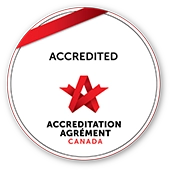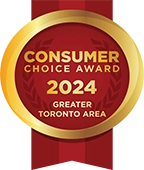Looking for addiction treatment that fits your needs? Consider a partial hospitalization program (PHP) or intensive outpatient program (IOP). Both offer more flexibility and fewer restrictions on patients than an inpatient program would, while still providing access to invaluable medical and psychiatric support.
In most cases, either of these programs will allow you to stay at home, continue going to work, and otherwise maintain your current schedule and lifestyle with only moderate disruption. While both PHP and IOP are fantastic options that make going to rehab more practical, these programs have noticeable differences that can end up making a big impact on your odds of recovery.
Different Levels of Care: PHP and IOP
At a glance, these two part-time recovery options might seem interchangeable. Neither involves the (often costly) requirement to live onsite at the facility, allowing you to maintain more freedom and independence. Both give you access to physicians, therapists, and medication if needed. The biggest difference between a partial hospitalization program and an intensive outpatient program is the time commitment.
However, the difference of a few hours can translate to differences in the amount of support, accountability, and potential to backtrack. That is a key difference. It’s crucial that you choose an addiction treatment program that will be the most effective—not the most convenient. Ultimately, determining whether partial hospitalization program or IOP is better for you will be determined by:
- The severity of your addiction
- Whether or not you have been to rehab before
- Your medical history
Individuals in PHP spend more time in psychotherapy and group sessions than those in IOP. For example, participants in PHP may spend up to 8 hours a day in treatment. The length of each session depends on the needs of the patient.
To meet each person’s needs, holistic therapies such as yoga and mindfulness are often added to psychiatric and medical treatments. These bring relaxation, calm, and balance to life in recovery.
Understanding Levels of Addiction Treatment
The types of addiction help you can get are divided into what are called levels of care. These are a way to explain the intensity of the treatment a patient is receiving at any given time during recovery. The levels of care are categorized as follows, in order from most intensive to least intensive:
- Inpatient program (IP)
- Partial hospitalization program (PHP)
- Intensive outpatient program (IOP)
- Outpatient program (OP)
Throughout your recovery, your required level of care may change. In the beginning, you might need 24-hour medical supervision with medication management (detox). After that, you may enter PHP, and then, towards the end of your addiction treatment, you might live in a group home and attend IOP.
Why So Many Addiction Treatment Options?
The levels of care represent the spectrum of addiction treatment, and range from the most intensive and comprehensive care, inpatient (IP), to the mildest and least-intensive, outpatient (OP).
Think of these different recovery options as steps. With each one, patients build upon the skills they learned previously, strengthening their relapse prevention skills and building a stronger foundation for resisting temptation.
Further, because greater independence means more opportunities to fall into old ways, a recovering addict would ideally begin recovery at the most intense level of the spectrum and eventually move their way through the lower levels of care. As they do so, patients will gain more freedom and spend less time in the facility but in a controlled and thoughtful manner that maximizes their long-term success.
However, addiction treatment is not one-size-fits-all, so it’s not always necessary for a person to go through all the levels of treatment. Many find PHP and IOP to be effective starting points that serve them better than traditional residential treatment would, and are able to resolve their addiction without additional treatment afterward.
What is Partial Hospitalization?
A partial hospitalization program is more intensive than IOP, but less so than full inpatient or residential rehab. Compared to IOP, partial hospitalization requires more visits and sessions per week.
This commitment is comparable to that of a residential recovery program, but unlike traditional rehab, in a PHP program, the patient does not reside onsite at the facility during treatment. They can choose their own housing accommodations during recovery.
PHP typically requires an average of 5 visits a week. These visits can vary in duration from four to eight hours, depending on the needs of the patient.
PHP can be paired with other activities to improve the chances that the addiction treatment program will be successful. As patients are at a vulnerable stage of recovery, every option available to help improve mental and physical health should be considered, especially ones that go beyond therapy sessions. Examples include nutrition coaching and time management classes.
What Are the Benefits of PHP?
Each individual processes addiction in different ways, and many factors dictate which kind of treatment is best, such as severity of addiction, family history, other mental health conditions, and lifestyle. Rushing through addiction treatment faster doesn’t mean you’ll recover sooner. Quite the contrary: it can reduce your treatment’s effectiveness.
Partial hospitalization is the perfect next step for anyone who has just left rehab or residential treatment but doesn’t feel “stable” yet. As an intermediary between residential and outpatient treatment, people still have a significant amount of support from the facility, but can now access the outside world again during recovery.
PHP can help patients better adjust to the transition back to their usual routine. Further, too much freedom too soon can be detrimental to a recovering addict. Going straight from inpatient addiction treatment to outpatient can put them at greater risk of falling back into old habits. The time commitment of PHP provides much-needed structure which plays an important role in reducing the likelihood of relapse.
Who is Partial Hospitalization Best for?
While you can go through detox with an intensive outpatient program, PHP gives you greater access to medical staff which allows for better monitoring of your condition. A partial hospitalization program is an ideal choice for those who:
- Completed residential treatment but are at high risk of relapsing
- Faced severe episodes of addiction and/or overdose and have difficulty managing cravings
- Are still experiencing withdrawal symptoms and may need further detoxification services
What is an Intensive Outpatient Program?
An intensive outpatient program provides patients with medical and psychological help with minimal time commitment. This allows patients to return to their normal lives such as working or caring for children.
In this program, patients only need to go to their treatment facility for counselling, therapy, relapse prevention skills, and any additional services provided.
Intensive outpatient requires only a few visits a week. A common schedule is three visits per week, each lasting three hours. The number of sessions and hours are vary based on the diagnosis of the patient and will change as the patient improves and progresses through recovery.
However, because IOP is less intensive than an inpatient program, it also takes longer to complete. Nonetheless, this does not take away from the effectiveness of the program. Evidence shows that IOP works correctly prescribed and followed.
Apart from individual therapy and counselling, IOP treatment includes other services to ensure full recovery from addiction. Group therapy can help a patient better understand themselves and their process through other people’s advice, experiences, and insights. Exercise and nutrition counseling can motivate the patient to take care of their physical wellbeing, and life skills training can equip them with the tools to manage stress in the real world.
Who is IOP Best For?
IOP treatment is recommended for people who have gone through the acute stage of withdrawal and do not require round-the-clock monitoring. It is also recommended for those who do not meet the diagnostic criteria for inpatient treatment and only suffer from moderate to mild addiction.
This addiction treatment program is the preferred choice among those who want to start getting back to their usual routine: you can stay in their own home and have more time to work or manage household responsibilities. However, it is important to be realistic about your medical and psychological needs and just how much freedom you can handle. While you may be eager to be “done” with rehab, if you do not feel confident that you have a handle on your addiction, it would be best to enrol in a higher level of care such as PHP.
IOP is not recommended for those who:
- Would be returning to an environment that would trigger cravings
- Would be exposed to situations or people that might encourage substance abuse
- Have difficulty arranging transportation to go back to the facilities for sessions
How Do You Know Which Program to Choose?
Choosing the right program can be downright confusing . With all the letters, acronyms, and industry jargon, it can be difficult to figure out where to even start. To set you on the right path, there are a few things to keep in mind when searching for the best addiction treatment program for you.
Time Commitment
There are short-length program options as well as longer alternatives. The shorter programs last for around 30 days and are considered short-term residential treatments – these would be the ones including therapy and/or counselling, starting with the detoxification process, which would be the first step in addiction treatment. Long-term recovery options can go for 90 days or longer, depending on the service setting and the severity of the addiction. Although IOP may have a longer duration than PHP or inpatient treatment, it requires less time commitment on a day to day basis.
Affordability
Another thing to consider is your financial situation. Partial hospitalization is more time-consuming than an intensive outpatient program, so it is more expensive, but less costly than traditional inpatient rehab.
There are many ways to pay for addiction treatment. Insurance may cover mental and behavioural health services, and many programs offer payment plans or allow for credit card payment.
Lifestyle
The final point that affects the choice between IOP and PHP is service setting. This aspect of the program tends to be influenced by the patient’s lifestyle and limitations, which step of the recovery process they are in, and pragmatic day-to-day factors such as lifestyle, and the need to work, study, or take care of family members.
IOP involves less time in a rehab setting than PHP, so the lifestyle will have a closer resemblance to “real life”. This can aid recovery but increases the likelihood of relapse as many triggers will be present.
Addiction treatment options largely fall under two categories: inpatient and outpatient. These define whether the patient would have to reside in the facility or attend sessions there while living at home. This difference may be the easiest way to hone in on the recovery model that works best for you. However, it is important to keep in mind that there’s a difference between what will be effective and what is most convenient.
People who are going through an intense addiction or who are too much of a risk to others or themselves are often recommended for residential treatment. Once that is complete, some might not feel ready to go back out there and start their lives from scratch, feeling they need to gradually transition into it. Some, however, might not even qualify for or need inpatient treatment. Whichever might be the case, there are other options for outpatient treatment for them, such as IOP and PHP.
Getting Addiction Treatment
The key difference between a partial hospitalization program and an intensive outpatient program is the level of support. Throughout recovery, PHP provides more direct treatment than IOP. It can be a bridge from full inpatient rehab to outpatient services. The higher the level of support, the more intense the intervention.
No matter where you are on that journey, Addiction Rehab Toronto can provide you with the support you need to have the best chance of success. Whether you are calling for yourself or a loved one, don’t hesitate to seek out help. The sooner addiction treatment begins, the greater the likelihood of long-term recovery.








